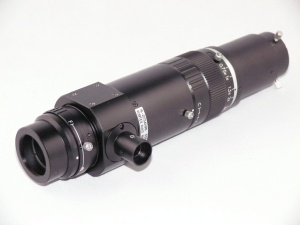Jul 22 2009
MORITEX Corporation, a leader in the field of lighting systems based on LED and fiber optic technology, today unveiled the latest addition to its family of telecentric Machine Micro Lenses (MML) with a new high resolution (HR) zoom lens to exploit the full potential of Mega Pixel (MP) sensor cameras.
 The new High Resolution MP Zoom Lens from MORITEX is able to exploit the full potential of Mega Pixel (MP) sensor cameras and meets the rising resolution challenges inherent in industrial applications and microscopic imaging labs. FOTO: MORITEX
The new High Resolution MP Zoom Lens from MORITEX is able to exploit the full potential of Mega Pixel (MP) sensor cameras and meets the rising resolution challenges inherent in industrial applications and microscopic imaging labs. FOTO: MORITEX
Unique in the MP spec, the zoom lens has a long working distance of 70.9 millimeters and is equipped with a 6 x optical telecentric zoom with adjustable iris & focus. Available with an optional integrated illumination system, the lens covers the entire view of all types of objects for easy and accurate recognition. Furthermore, the zoom lens is loaded with a number of lens elements optimized to provide the very high optical resolution needed for today’s MP cameras.
“Today’s release of the new High Resolution, MP Zoom Lens is indicative of our commitment to meet and exceed rising resolution challenges inherent in industrial applications and microscopic imaging labs,” said Matthias Endig, Product Manager for Machine Vision. “Together with SCHOTT, MORITEX is focusing on providing vision engineers the best possible image for repeatable and accurate machine vision image processing.”
The release of the new high resoluton MP lens marks the latest addition to MORITEX's family of small, lightweight, C-mountable, and telecentric MMLs that provide high resolution and high contrast images for virtually any imaging application, including those utilizing 5 MP cameras. Extensively used in high tech industries such as semiconductor manufacturing, electronic equipment, electro-optical systems, machine vision imaging systems, telecommunications, information technology (IT), bio-science and laboratory automation, the lenses are ideal for component recognition, and automated visual inspection.